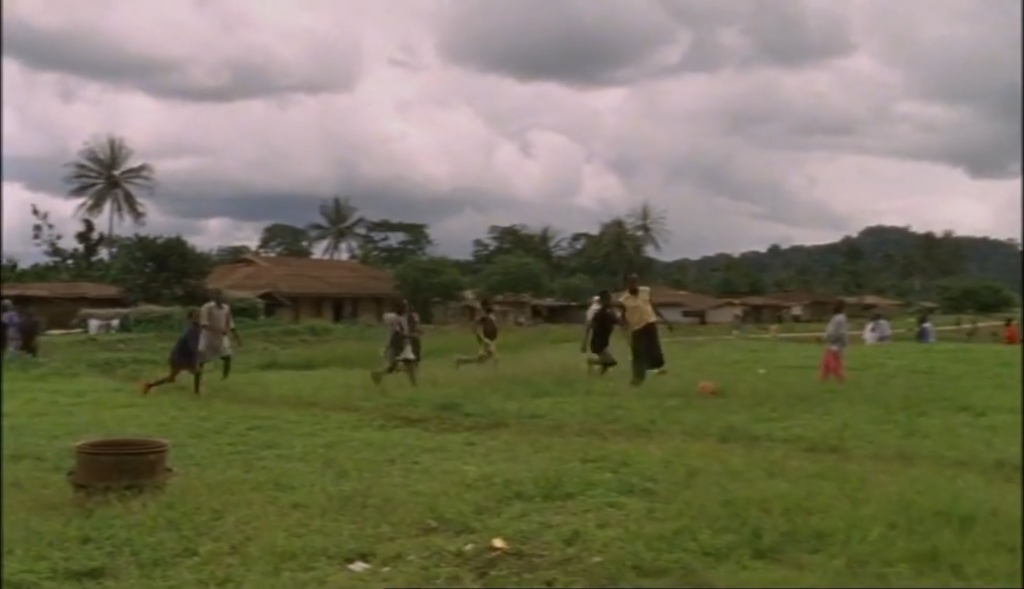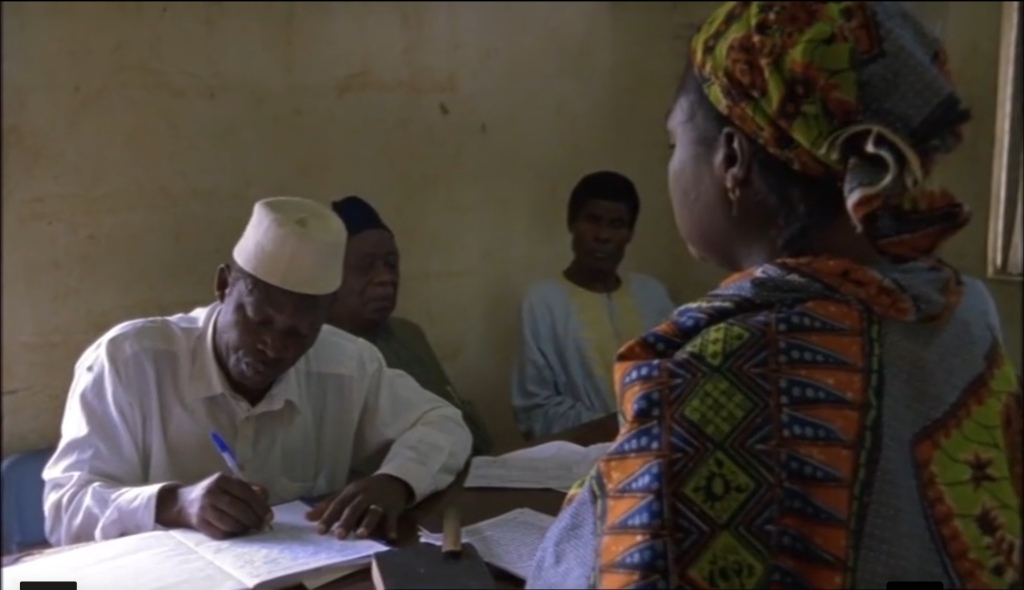Throughout the divorce sequence of Sisters in Law, Kim Longinotto’s utilisation of digital technology has allowed her to have an indirect impact upon the result of the divorce trial displayed in this sequence, despite the underlying aim to produce a fully unobtrusive observational documentary.
The first portion of the sequence is made up of a long take, in which a wide shot displays children playing football – one of many examples of domestic life presented throughout the documentary within the village of Kumba. Due to the fact that a handheld digital camera is able to record everything as storage is extremely cheap, Longinotto is able to acquire this B-roll footage and select appropriate clips later.

Within the courtroom, it becomes apparent that Longinotto has chosen to utilise a multi-camera setup once again. Due to the cameras being cheap and easy to use, she is able to capture good coverage of the scene. She can also, if needed, fluidly move out of the way as to not interrupt the proceedings, due to the portability of the camera. In this case, one camera is positioned in the corner of the room, whereas the other is stably positioned behind the couple, framing a two-shot.

The camera in the corner of the room continually films in a spontaneous manner – Longinotto pans, zooms and tilts on the fly as she deems appropriate. The camera itself works well in the dimly lit courtroom, meaning that no artificial lights are required, making the process much more unobtrusive. Due to cheap and limitless storage, Longinotto is once again able to film everything with one long take, alongside the fact that the laborious and conspicuous process of swapping film cartridges is not required.
Towards the end of the trial, the court behave in a manner which indicates to the viewer that Longinotto’s presence has been forgotten. Asserting their dominance over Amina, stating that “what we say must be”, Longinotto decides to make an active decision as she realises that Amina is in danger. She chooses to countermand the underlying mode of the film, an observational documentary, by actively stepping closer towards the court with the camera in hand. Afterwards, one of the judges jokingly remarks that “he’ll split you open” to Amina, initiating a change in opinion. Through this, Longinotto has indirectly forced the court to change their originally oppressive ruling.